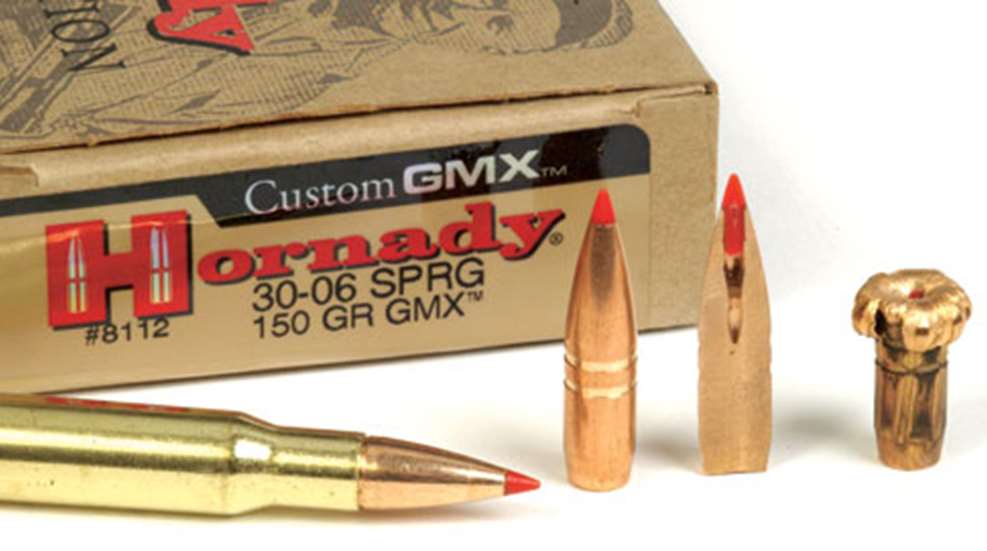
The boattail-style GMX has a polymer tip to raise the ballistic coefficient and to aid in initiating expansion. There are two rings cut into the forward portion of the bearing surface of the shank. These allow the displaced metal to flow when engaging the rifling, which can improve accuracy and reduce metal fouling. The front ring also serves as a crimping groove, or cannelure.
Hornady's Steve Johnson explained that one important goal when designing the bullet was that the load data for all its other bullets of the same caliber and weight must also work with the GMX bullets. Johnson assured me that any data developed for handloading Hornady's other bullets are fine to use with the GMX, provided the caliber and weight are the same. The GMX was also designed to have a similar BC as its lead-core, plastic-tipped, boattail bullets for big game, such as the SST and Interbond.
The GMX is a sleek bullet with a high ballistic coefficient of .415 (for a .30 caliber, 150-grain bullet) and proved to be accurate in my rifles. I shot it in the Knight KP1 and a Remington 700. Accuracy in both rifles was in the upper percentile of factory loads tested in these guns. This accuracy potential, combined with the high BC, make the GMX a good long-range choice with positive expansion at impact velocities as low as 2000 fps. But it's tough enough to withstand high-speed, close-range impacts as fast as 3400 fps. That's a very wide performance window, which is important in a big-game bullet.
Unlike the notable Barnes bullet that expands in a four-petal X shape, the GMX is designed to expand into a mushroom similar to conventional lead core bullets, which increases the frontal area. Like any monolithic expanding bullet, the GMX has excellent weight retention and deep penetration. Hornady claims 1.5-times expansion and 95 percent weight retention, with 30 inches of penetration in ballistic gelatin.
To test that claim, I fired two .30-06, 150-grain GMX bullets point-blank into Perma-gel. The average penetration was 34.25 inches. The average retained weight was 149.35 grains, which, when you account for the missing plastic tip, is 100 percent. The average expanded diameter was .501 inch. To compare, I fired a 180-grain Hornady Interbond .30-06 at the Perma-gel. This bullet is 30 grains heavier and has a reputation for excellent penetration. It penetrated 24.75 inches, weighed 142.8 grains and measured .539 inch. Although the Interbond exhibited larger expansion, the GMX beat it in penetration and weight retention.
Another impressive trait is that it retains a long shank after expanding, which aids in straight penetration. These bullets penetrated so straight in Perma-gel that both still had fragments of their plastic tips captured in the dimple in the center of the bullet.
The GMX is currently available in five bullets and six factory loads, but this line will surely grow. This versatile bullet is a good choice for any big-game hunting from antelope to zebra. It clearly works well on deer and may well be the best bullet for bigger game like elk that Hornady has ever produced. It fills a big hole in the Hornady line as until now it lacked a super-premium bullet. I think the GMX is destined to become one of the most respected hunting bullets on the market.





































